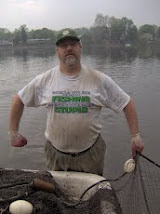DAY HIKING IN
PENNSYLVANIA
Readers of this travel
blog know that we are avid day hikers and not just because of this COVID
pandemic limiting our choices for recreation. We really DO like to take hikes.
In June your favorite
traveling tandem drove to the Great Smoky Mountains National Park in Tennessee
to hike there for a week, returning each day to our cabin aerie just outside of
Pigeon Forge. Hikes there ranged from easy to moderately hard. The Great Smoky
Mountains National Park is the most visited NP in the United States and at
times the trails were crowded. We were never really alone.
Another place we like
to hike is along the Schuykill River Trail just outside of Phoenixville, Pennsylvania.
Pleasant and flat this easy trail is sided on one side by the river and the
canal on the other. This too is a popular route and can be crowded at times,
but often we stop for a well-deserved beer at Fitzwater Station and sit on
their deck overlooking both the river and the canal.
We also like to hike at
Green Lane Park a few miles north from us. There are several, mostly easy,
trails here that skirt the reservoir. During the warmer months, paddleboards,
rowboats and kayaks can be rented here though there is no swimming allowed in
the reservoir. This is a popular place for many hikers and it too can also get
crowded.
 |
| On the Appalachian Trail |
These two trails are
about 5-10 miles from the house and more of a suburban setting. Recently though
we decided to drive about an hour away to Hamburg, Pennsylvania to hike along
the Appalachian Trail. Parking is at the small Hamburg Water Treatment plant
and we took a moderately difficult 9-mile loop, linking up with the Appalachian
Trail in order to reach two popular vistas that give commanding views of the
Pennsylvania Lehigh Valley countryside and surrounding ridges, The Pinnacle and
The Pulpit.
Using two APS,
All-Trails and The Hiking Project, which provide topographical maps of the trail,
points out interesting features along the way and offers guidance to the
trail-head on Reservoir Road, we reached the trail-head in a little more than
an hour from our house. Despite the rural setting, the trail-head is a short
distance from Interstate Route 78, and snippets of the highway can be seen from
the Pulpit, the first of the outcroppings, offering incredible views along this
stretch of the Appalachian Trail.
Be aware that this is a popular day-hike. On weekends parking is at a premium and if interested it is best to go
during a week day. We hiked on a Tuesday and we still passed plenty of other
hikers.
From the plant the
trail ascends steeply to meet up with the Appalachian Trail. We followed the trail north for a few miles and near the Pulpit outlook the trail becomes a rocky boulder field that you have to pick your way carefully along. I'd hate to do that with a full backpack.
The Appalachian Trail
extends for over 2,000 miles from Maine to Georgia. Although there are many
thru-hikers who walk end-to-end, which takes 5-6 months, A.T. can be enjoyed by
day hikers like ourselves. It is estimated that some 2 million people hike at
least a portion of the trail yearly and according the Appalachian Trail
Conservancy it is the longest hiking-only footpath in the world, meaning no
bikes or motorized vehicles are allowed on the trail.
As a young man I used
to park at an old YMCA camp in New Jersey and hike onto the Appalachian Trail
nearby, pitch a tent and spend the night, but the thought of taking half a year
out of my life to complete it has always seemed daunting (and not a lot of fun).
New Jersey has about 77
miles of Appalachian Trail when it crosses over from Pennsylvania at
the Delaware Water Gap. Over 220 miles of the trail are in the Commonwealth of
Pennsylvania, colloquially known as the Keystone State and it enters Maryland
at the tiny border town of Pen Mar.
Passing through a total
of fourteen states, the Appalachian Trail is part of the Triple Crown of
Long-distant Hiking in the United States, which includes the Continental Divide
and the Pacific Crest Trails.
Throughout its length
the A.T. is marked by “white blazers”, rectangular splotches of white on trees
and rocks. To reach the Appalachian Trail we had to follow similarly shaped “blue
blazers” which are found all along the trail denoting side trips to shelters,
viewpoints and parking areas.
It’s a fairly steep ascent
to Pulpit Rock and near the end the trail is just a boulder field and we had to
pick our way along from rock-to-rock, but this effort to reach the promontory
is worth the effort. We sat for a long while gazing out into the Lehigh Valley,
and the fall foliage was beautiful. Here and later at the Pinnacle vultures catching
the up drafts soared past us at eye level. With my binoculars I was able to see
the distant ribbon of the highway, but just below us and to our right was the
Blue Rocks boulder field. We thought it was a stream at first, but it was a
field of rocks that was hedged by deep woods, giving the appearance of a body
of water from this distance.
 |
| PULPIT OUTLOOK WITH BLUE ROCKS IN THE DISTANCE |
The Blue Rocks boulder field were formed by erosion of the nearby Blue Mountains, which rise in the distance. Extreme cold and thawing broke off parts of the mountain sending them tumbling downhill onto the still frozen ground. Water then washed away the soil preventing any vegetation growth. No trees or grass grows here and the boulder field really looks like a river.
The Pinnacle is another
couple of miles along the trail and the promontory is a larger area. Finding a
place to sit on the rocks we had lunch and admired the landscape, being careful
to flinch every once in a while, so a vulture didn’t think we were a morsel.
Dotted around this promontory were campsite fire places left by thru-hikers
having spent the night. The approach to the Pinnacle is designated by a cairn
of rocks.
Here the Appalachian
Trail makes a 340 degree turn and the trail becomes an easy trail through the woods
until we reached a large grassy field that is used as a helipad. There, we
picked up the Furnace Creek Trail, marked by blue blazes, and headed downhill. The
trail here is quiet and pleasant follows the creek and passes the reservoir
before finally reaching the car.








































No comments:
Post a Comment